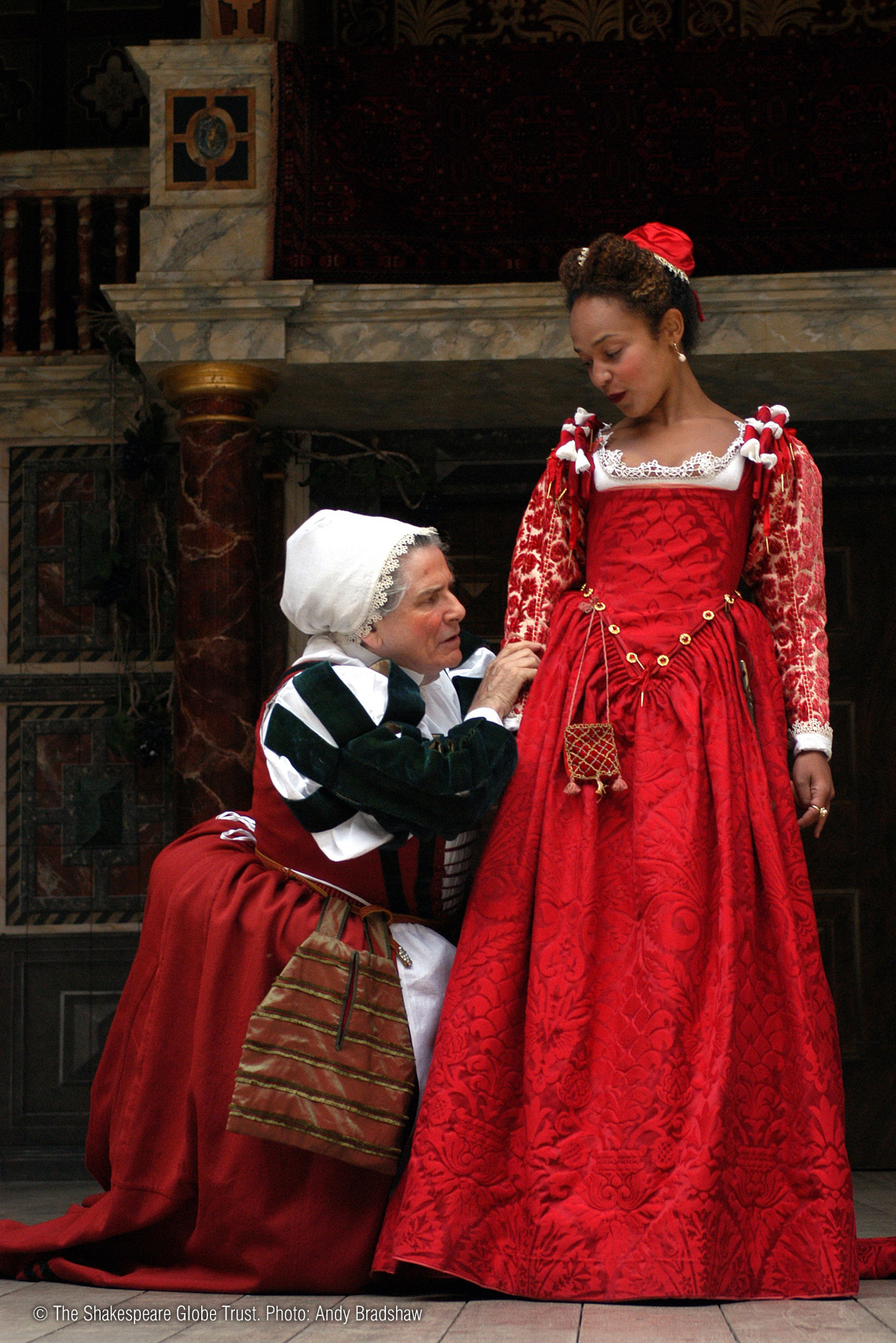In these lessons, students will examine the key characters in Romeo and Juliet and their dramatic functions. Tasks include: reading the key scenes featuring Friar Laurence, discussing his motivation for helping the lovers; a close analysis of Mercutio's Queen Mab speech from Act 1, Scene 4; and a list of practice exam questions with an emphasis on characterisation.
In order to benefit fully from these lesson plans, we recommend you use them in the following order:
- Text in Performance
- Language
- Characters
- Themes
- Contexts
If you would like to teach the play in greater detail, use these advanced KS4/5 Lesson Plans. If students are new to the play, we suggest you start with the introductory KS3 Lesson Plans.
These lesson plans are available in the Downloads section at the bottom of this page. To download resources, you must be logged in. Sign up for free to access this and other exclusive features. Activities mentioned in these resources are available in a separate downloadable 'Student Booklet', also at the bottom of this page. The 'Teachers' Guide' download explains how best to use Teach Shakespeare and also contains a bibliography and appendices referencing the resources used throughout.
Key Questions for Students:
Can I investigate the importance of the Nurse in Romeo and Juliet and support my ideas with evidence?
Can I investigate the importance of Friar Laurence in Romeo and Juliet and support my ideas with evidence?
Key words: attitudes, character, Friar Laurence, motivation, Nurse, values
Prologue: Opening Discussion
Explain to students that over the course of the next few lessons, they will be investigating a number of characters and then writing an essay about one of them. They will be researching, planning and drafting an essay that focuses on one particular extract from the play, but they will be expected to make links to other parts of the play too. They will, therefore, need to consider the character’s importance in the play as a whole, as well as in the extract.
Begin this lesson by returning to the Dramatis Personae sheet in the Student Booklet. Ask students to discuss in pairs which characters support or enable the romance between Romeo and Juliet. Students could even rate the characters, i.e. 0 = violently opposed and 5 = strongly supportive. Share findings, aggregate the scores and write on the board the characters who received the highest score and lowest scores from the class.
Enter the Players: Group Tasks
1) Juliet’s nurse
Explain that the parts of Juliet's Nurse and the Franciscan Friar Laurence are two of the biggest parts in the play. We cannot be sure of the Nurse’s name, but 'Angelica' is certainly possible given the reference in Act 4 Scene 4.
Whereas Romeo has several friendships with other young men in the play, Juliet’s greatest confidante (apart from Romeo) is the Nurse, as she does not have siblings or young female friends in whom she can confide. Ask students to consider the following questions: how does Shakespeare suggest the closeness of their relationship? How would you describe the language they use with each other? How does this contrast with the way Juliet speaks with her parents? Students should then pick out five moments from the play which show an aspect of the relationship between these two characters, and write a short paragraph containing textual evidence for each point.

2) Friar Laurence
Students should make notes about Friar Laurence under the following headings:
- his role as a Friar (religious, herbalist, etc.)
- his motivation in helping the couple
- his decision to marry them illegally
Next, students should look for quotations to support their points. Some key scenes to focus on include Act 2 Scene 3, Act 2 Scene 5, Act 2 Scene 6 and Act 5 Scene 2.
Finally students should search the Adopt An Actor archive, which contains interviews with actors who have played Friar Laurence at the Globe. Using the actors’ perspectives to further expand their notes, students should consider the different possible interpretations of this character on stage.
3) Soliloquies
Explain that Shakespeare uses soliloquies for a variety of reasons, e.g. so that deeper themes and ideas of the play can be explored, or so that a new character can ‘introduce’ themselves to the audience. Both of these are true of Friar Laurence’s soliloquy in Act 2 Scene 3. Students should read and analyse the language and ideas of this extract in the Student Booklet. They will then find a list of other soliloquies in the play. Students should consider how these soliloquies contribute to our understanding of the characters who speak them, and of some of the key themes and ideas within the play.
Exeunt: Closing Questions for Students
What is the importance of the Nurse in the play?
What is the importance of Friar Laurence in the play?
What do we know about their values and attitudes?
What do they represent or symbolise in the play?
What motivates them?
Suggested plenary activity…
Should the Nurse and Friar Laurence have supported Romeo and Juliet to the extent that they did? Should they take any of the blame for what eventually happens? Discuss.
Asides: Further Resources
- The American novelist Lois Leveen published a novel called Juliet’s Nurse in 2014, written from the Nurse’s point of view.
- Leading female roles were played by boys in Shakespeare’s time, but some older female characters – such as the Nurse – would have been played by men. This gave Shakespeare the chance to write for the humorous possibility of a man dressed as a woman, a popular form of comedy to this day!
- Romeo, Juliet and Friar Laurence all put themselves at risk as a result of marrying secretly, because the marriage was unlawful. Since Romeo and Juliet were both under twenty-one, they needed their parents’ consent to marry.
Epilogue: Teacher’s Note
Both the Key Stage 3 and the Key Stage 4 materials for Characters take students through activities relating to each of the key characters in Romeo and Juliet. At the end of this section and throughout the Student Booklet, students will be able to revise what they have learned about the characters and write an essay about one character from the play.
Key Questions for Students:
Can I investigate the importance of Benvolio in Romeo and Juliet and support my ideas with evidence?
Can I investigate the importance of Mercutio in Romeo and Juliet and support my ideas with evidence?
Can I reflect on what we learn about Romeo through his relationships with family members, friends and servants?
Key words: Benvolio, comedy, friendship, Mercutio, Romeo
Prologue: Opening Discussion
Ask students to draw a spider diagram with Romeo in the middle of it. They should think of all of the characters he knows in the play, and add these to the diagram. What is the nature of each relationship? Ask students to find quotations to reflect this for each character. Discuss with the class the importance of his friendship with Benvolio and Mercutio to him.
Enter the Players: Group Tasks
1) Benvolio
Students should carry out a focused reading of Act 1 Scene 1, concentrating on Benvolio. Ask students to look for evidence of the various roles that he plays within this opening scene, e.g. member of the Montague family, peacemaker, close companion of Romeo who gives him advice. As an extension activity, look for further evidence in Act 1 Scenes 2 & 4, in Act 2 Scene 4 and in Act 3 Scene 1 to support these points.

2) Mercutio
Ask students to discuss and find evidence to support some key ideas about Mercutio’s character and function in the play:
- his love of wit and wordplay
- his humour and use of double entendre
- his upper class status
- his neutrality in the feud
- his friendship with Romeo
- his death in Act 3 Scene 1 and the consequences of this for Romeo and Tybalt.
There is a table in the Student Booklet into which students can enter the quotations they have found for each point.

3) Queen Mab speech
Now model for students a close analysis of Mercutio’s Queen Mab speech from Act 1, Scene 4, lines 53-94. The speech is also included in the Student Booklet. There are a number of discussion points for students to consider at the end of this extract.
4) Mercutio’s wit
More independently now, students should look in the Student Booklet where they will find a page of quotations by Mercutio. Students should annotate these quotations, applying their knowledge and understanding of literary features and also of the play’s key themes and motifs.
Exeunt: Closing Questions for Students
What is the importance of Mercutio in the play?
What is the importance of Benvolio in the play?
What do we know about their values and attitudes?
What do they represent or symbolise in the play?
What motivates them?
Suggested plenary activity…
The Globe actress Yolanda Vasquez shares a list of questions she asks when she is rehearsing a play. Students could answer these questions about Benvolio and Mercutio: 1) Who am I? 2) Where am I? 3) When is it? 4) What do I want? 5) Why do I want it? 6) How will I get it? 7) What must I overcome? They should write in modern English in the first person. For the full list of questions, see Lesson 3 of Text in Performance.
Asides: Further Resources
- In order to build a detailed set of notes about the Montague household and Romeo’s other friendships, students could make notes about the scenes in which Romeo’s parents appear and what we learn about them. What happens to Lady Montague and why?
- Another key figure in Romeo’s world is his manservant Balthasar. Ask students to make notes on Balthasar’s role in the play.
Epilogue: Teacher’s Note
Both the Key Stage 3 and the Key Stage 4 materials for Character take students through activities relating to each of the key characters in Romeo and Juliet. At the end of this section and throughout the Student Booklet, students will be able to revise what they have learned about the characters and write an essay about one character from the play.
Key Questions for Students:
Can I investigate the importance of Tybalt in Romeo and Juliet and support my ideas with evidence?
Can I investigate the importance of Paris in Romeo and Juliet and support my ideas with evidence?
Can I reflect on what we learn about Juliet through her relationships with others?
Key words: character, compare, Juliet, motivation, Paris, theme, Tybalt
Prologue: Opening Discussion
Ask students to draw a spider diagram with Juliet in the middle of it. They should think of all of the characters she knows in the play, and add these to the diagram. What is the nature of each relationship? Ask students to find quotations to reflect this for each character. Share students’ ideas and quotations relating to the characters of Tybalt and Paris. Also draw attention to the fact that there is no appearance in the play of any young female friends for Juliet, unlike Romeo whose relationships with his friends are very significant in the play.
Prologue: Opening Discussion
1) Tybalt
In the Student Booklet, students will find a page of quotations spoken by Tybalt in the play. Students should annotate these quotations, applying their knowledge and understanding of literary features and also of the play’s key themes and motifs.
2) Paris
Students could now repeat this activity for Paris. Students should annotate these quotations, applying their knowledge and understanding of literary features and also of the play’s key themes and motifs.
3) Quotations about a character
Students should now take the two characters – Tybalt and Paris – and find quotations about them, said by other characters. There is a table in the Student Booklet into which this information can be entered. As students analyse the quotations, they should think about:
- who is speaking?
- when, where and with whom are they speaking?
Exeunt: Closing Discussion
What is the importance of Tybalt in the play?
What is the importance of Paris in the play?
What do we know about their values and attitudes?
What do they represent or symbolise in the play?
What motivates them?
Suggested plenary activity…
Students could look at the Rex Gibson quotation in the Asides about Tybalt. Students should consider how they would like to portray this character on stage and why. Ask students to pick out two quotations from the play spoken by Tybalt; they should then give advice to an actor about how these lines could be spoken and performed. This activity could also be repeated for other characters.
Asides: Further Resources
- Rex Gibson says about Tybalt, ‘The actor playing Tybalt (described in the script as ‘fiery’ and ‘bloody’) might portray him as a violent, brainless thug; or as a silky and sinister dandy; or as a dangerous psychopath, alternately laughing and snarling. He might even play him as someone who is really a coward at heart, but tries to put on a courageous face. In each case, the words are the same but the speaking style is different.’
- Students could look at the pictures of Tybalt and Paris in the Student Booklet, and think of quotations that they think the character might be saying at that point. Encourage students to justify their answers.
Epilogue: Teacher’s Note
There are further activities about Tybalt in the Key Stage 3 materials under Text in Performance.
Key Questions for Students:
Can I make useful notes about characters from the text for revision purposes?
Can I check that my notes contain textual evidence and references that I can cite in my essays?
Key words: characters, cite, development, evidence, motivation, notes, quotation, revision, textual evidence
Prologue: Opening Discussion
Ask students to write on a sticky note some things that make notes useful and build a spider diagram using the sticky notes on the board. Points might include: legibility; organisation; detail; coverage; fit for purpose (awareness assessment criteria etc.); memorable; matched to individual learning style (e.g. use of colour-coding, graphic organisers or voice recordings of notes).
Enter the Players: Group Tasks
1) Character passport
You should model making notes about a character on a large flip chart size piece of paper, creating a passport-style poster with the following features:
- name of character
- headshot of actor who played that part on page
- any textual information about that character’s age/appearance/birthplace/dwelling
- bullet points about that character’s title/role/relationship to other characters
- adjectives to describe that character
- ‘passport stamps’ – key moments in that character’s ‘journey’ through the text
Students should record this character passport in the Student Booklet and add brief quotations to support key points. This can be repeated for other characters on additional copies of the ‘Character Passport’ page and then inserted into the Student Booklet.
2) Textual evidence
White space has been left deliberately blank around the passport. This space has been provided so that students can supply brief and apt pieces of textual evidence around the ‘passport’ to support key points. Ensure that students know:
- how to record the part of the play from which each quotation comes (i.e. act, scene and line references)
- how to keep quotations short (especially if students are preparing for an exam on the text)
3) Task bank: character and motivation
The following tasks can be used in the modelling of planning and drafting written tasks, as well as for students’ more independently produced work for assessment:
- Discuss Shakespeare’s presentation of the character of Lord Capulet with reference to three scenes from the play.
- How does either Romeo or Juliet change throughout the play and why? How does Shakespeare show us these changes?
- What is the dramatic function of Friar Laurence in Romeo and Juliet?
Exeunt: Closing Discussion
What makes revision notes useful and memorable?
What do I know about my own preferred learning style that can help me revise as efficiently as possible?
Suggested plenary activity…
Share and compare pieces of evidence that students have selected to support key points. Ask follow-up questions to support students in their language analysis skills.
Asides: Further Resources
- A ‘Who says what?’ quotations quiz can be found here: 2013.playingshakespeare.org/quiz
- For a particularly collaborative approach to revision, students could work in groups on a particular character, and photocopies could be made of their finished poster for distribution to the whole class.
Epilogue: Teacher’s Note
For more detailed guidance on planning, drafting and language analysis, look under Language and at the linked materials in the Student Booklet.
